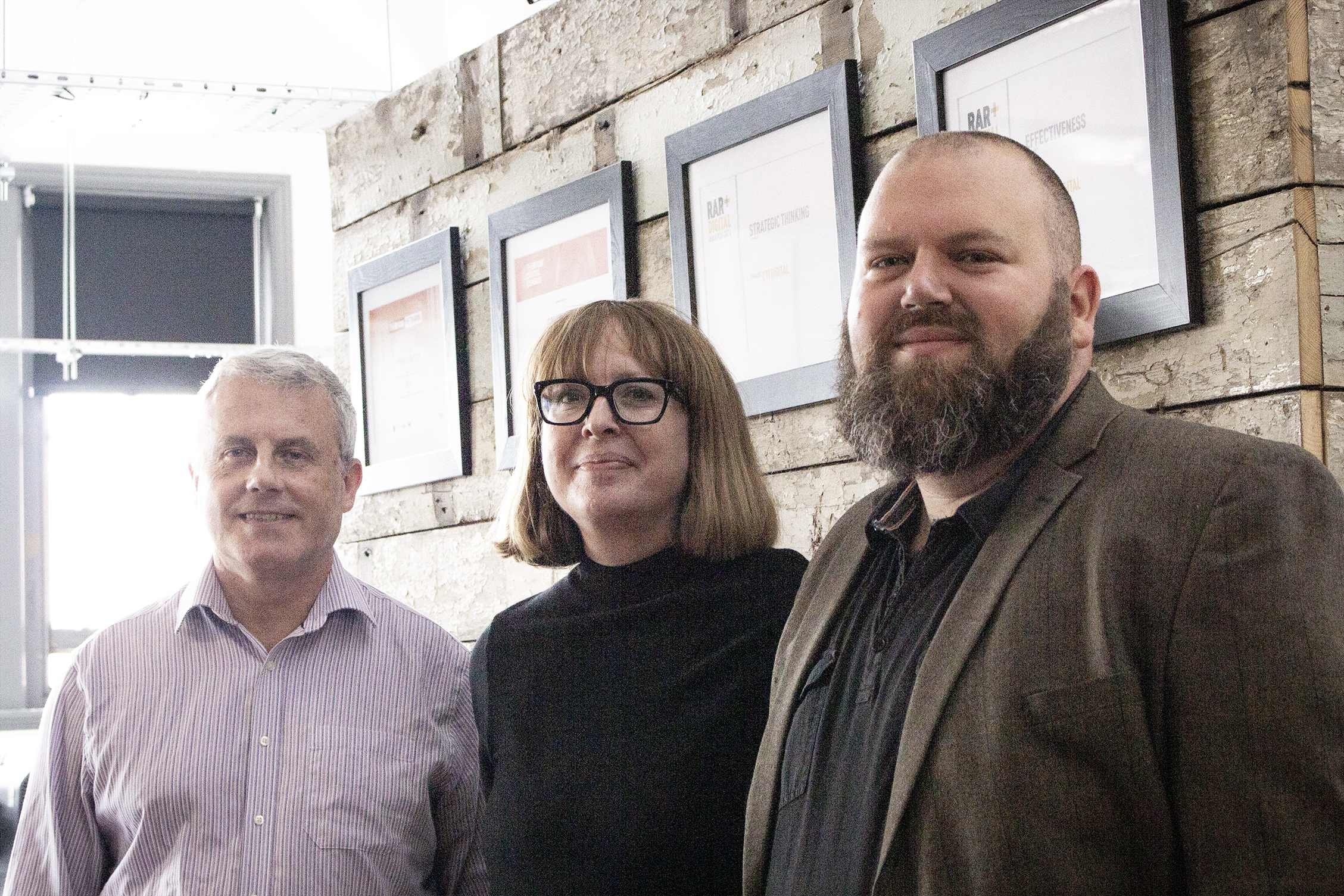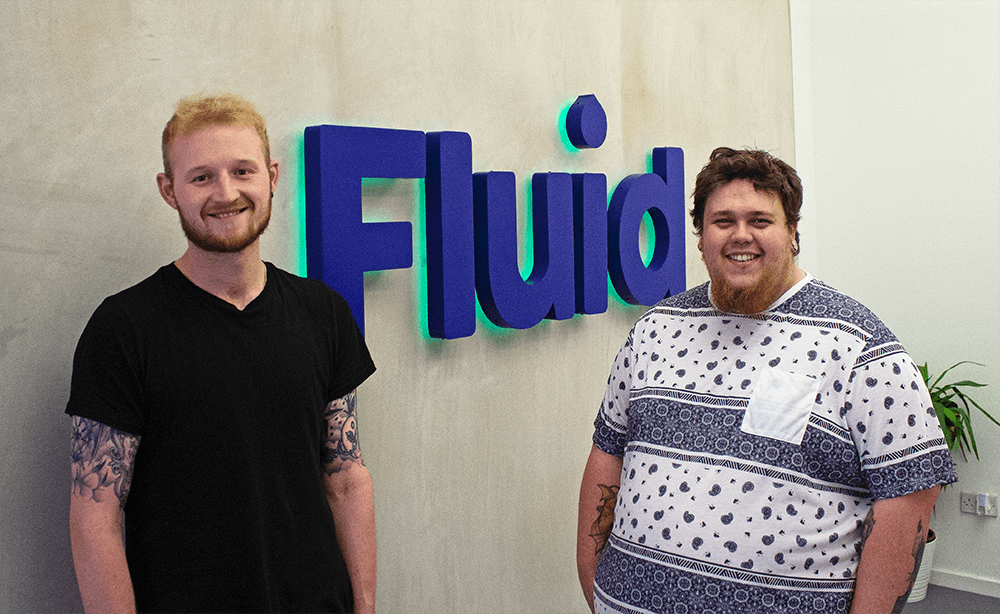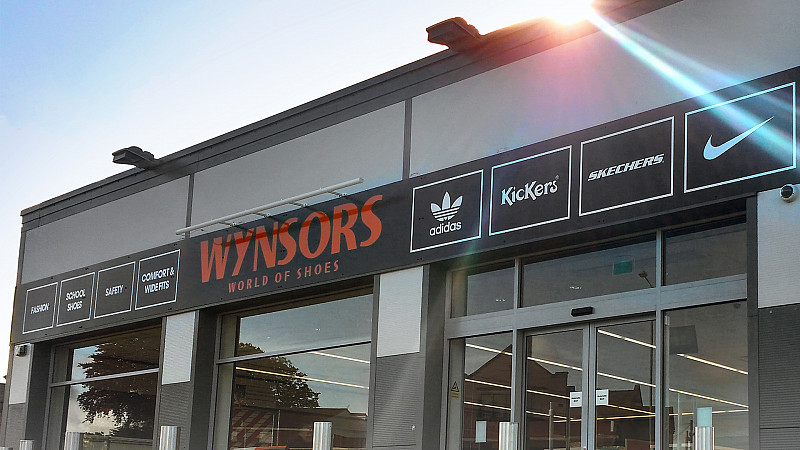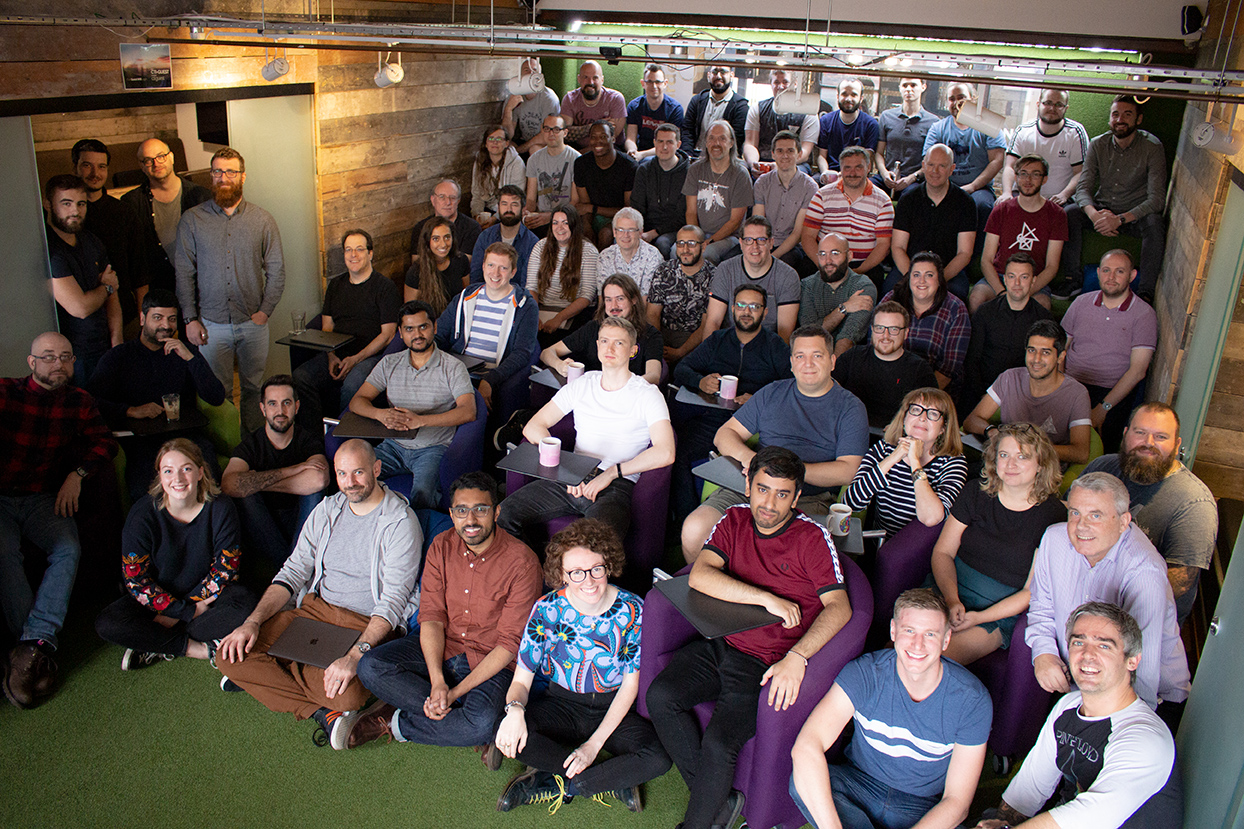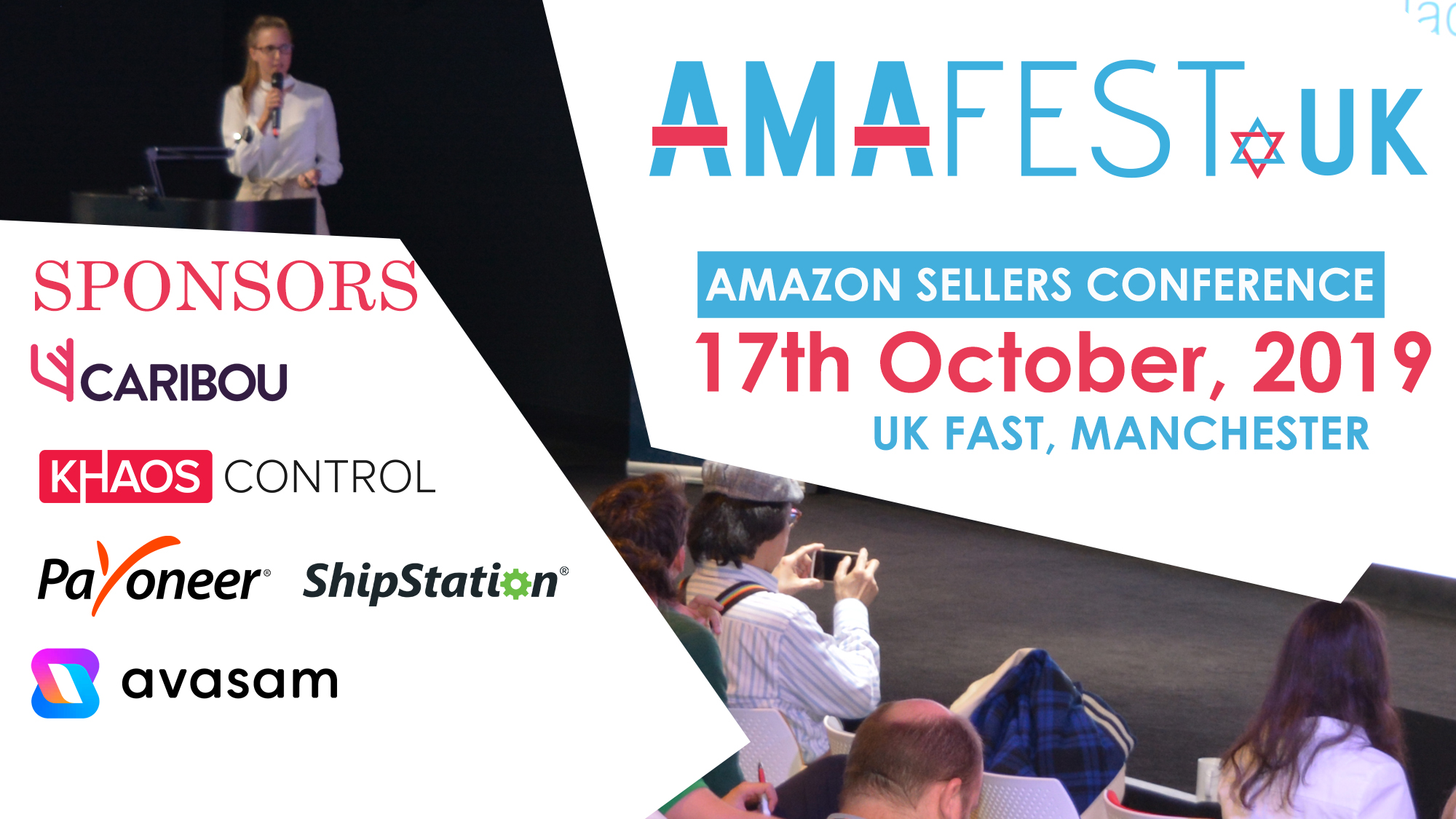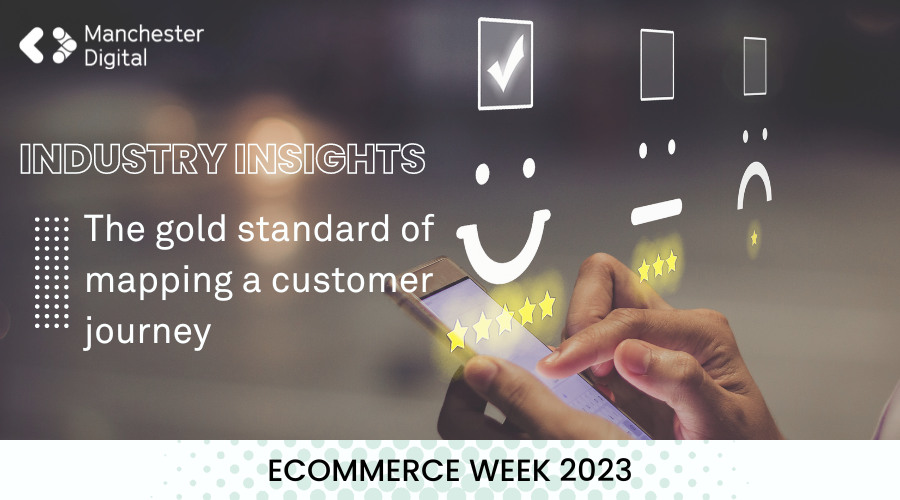
The gold standard of mapping a customer journey
There are many steps that customers take with an ecommerce store, and the experience that they encounter at each step could play a deciding factor whether the customer returns to that store. Therefore, it’s vital that ecommerce businesses understand their customer journey map, and have optimised the performance of each step.
As we begin Manchester Digital’s first Ecommerce Week, we’ve gathered insights from some of the North’s West leading ecommerce businesses on how to perfect some of the key stages of the customer journey.
Including insights from Advanced Commerce, PushON, The Very Group, Dark Horse, Rainy City Agency, Userism, One iota, Creative Content Works and Phoenix Digital.
Visual merchandising to delight your customer
Advanced Commerce
Visual merchandising is the art of creating an immersive shopping experience, that engages and delights customers. The paradox of choice states the more choice we have as consumers, the harder it is to make a decision. As we have entered the digital age, there has been an explosion of choice - the physical boundaries and constraints of floor space in a shop have been streamlined and moved to online. In a bid, to offer great service and grow revenues more and more choice has been offered, and this is making it harder and harder for consumers to make decisions.
The platform GrapheneHC incorporates all three key factors that help support essential part of retail strategy, - merchandising, product search, and personalization. GrapheneHC empowers retailers to take control over product display sequences using a blend of product and store attributes and determining where to apply that blend. It helps increase conversion rate, average order value, and higher order volume while reducing returns and cancellations
To delight a customer the essential element is to successfully make sure visual merchandising is the focus on a customer journey. Retailers should consider the path that customers will take through online website and create displays that guide them along this path, highlighting key products and encouraging target exploration.
Finally, it is important to regularly refresh and update displays to keep customers engaged and interested. By regularly introducing new displays and themes, retailers can create a sense of excitement and anticipation among customers, encouraging them to return and explore new offerings.
In summary, visual merchandising is a crucial component of successful retail strategy, and retailers can delight customers by creating visually appealing, informative, and entertaining displays that guide them on a journey through the store. By keeping displays fresh and regularly updating offerings, retailers can create a dynamic and engaging shopping experience that keeps customers coming back for more.
Click here to find out more about Advanced Commerce
Marketing automation, personalisation at its best
RedEye
Long gone are the days of sending the same marketing message to every person in your database. Every marketer knows they should be personalising their campaigns past first name. And this is what customers now expect. They expect brands to send them marketing messages that make sense to them - even more apparent with pockets tightened from the cost-of-living crisis.
Personalisation transforms the way you think about your customers taking them from contact data – to appreciating the individual’s needs, desires and wants. And understanding what messaging and content is relevant and valuable to that customer, depending on what stage of the relationship they are at with your brand.
However some marketers struggle, with 63% of marketers saying that data-driven personalisation was one of the most difficult strategies to implement.
But this is where automation comes in.
Automation enables personalisation at scale. It would be virtually impossible to send individualised marketing messages to each of your customers manually. Automation solves that issue. Also the recession might be impacting brands resources, so automation can help with enabling the marketer to be more efficient. Single campaigns can dynamically become relevant to each individual who receives it. Automation can take the stress and hard work away so that you can focus on other more strategic tasks.
Overall automation ignites personalisation, which enables you to transform contact data into genuine customers - real people who have a relationship with your brand, bringing retention, loyalty and a desire to spend more.
Click here to find out more about RedEye
User experience and design
Rainy City Agency
When mapping your customer journey, consider identifiable visual queues of your brand, product offering and/or services; when giving the user multiple options of entering the main purchase funnel from outside of the core website, your brand needs to be instantly recognisable. Use the same variation of your logo and try to keep colour combinations and image style similar. Fonts and tone of voice should be consistent and link seamlessly with the language style used on the website.
Call to action should be direct and clearly state an action e.g. Shop Now, Discover Now as well as mirroring the aesthetic of call to action found elsewhere in the customer journey. Treat calls to action as markers which guide your user to the next stage of the purchase funnel. Each marker needs to be identifiable as such meaning consistency is key.
Ensure your customer journey flows, eliminating ‘dead ends’, offering multiple options of entering and re-entering the purchase funnel throughout. Keep options broad and varied at the beginning of the journey, offering links to shoppable and content led pages. These options should gradually reduce the closer the user moves towards the checkout, helping them to focus in on their desired product.
Click here to find out more about Rainy City Agency
Customer research and personas
The Very Group
Customer journey maps are a great way of telling compelling stories that articulate the end-to-end customer experience of your product or service. As a living document, with mixed layers of synthesised qualitative and quantitative information, it can quickly become the focal point of your team’s shared understanding of the experience they’re creating.
While there isn’t a one-size-fits-all solution for your map it is essential that you make it easier for your team to digest the contents using visuals and short verbatim quotes, which will not only bring the customer’s voice into the room but creates a rich and compelling story for your team and stakeholders to follow.
Continuing to iterate on your customer journey map with new insights from research or data will allow you to grow as a team and identify new personas, stories or scenarios that will help evolve your understanding and build greater empathy for your customers. Mapping a customer journey can help create a more user-centred experience, increasing user satisfaction and leading to improved business outcomes.
Click here to find out more about The Very Group
Building an omnichannel strategy
One iota
Wherever a retailer starts their life and journey, whether with stores and then adding online or starting as an online retailer and opening stores, then as these channels grow a clear and cohesive omnichannel strategy is critical. Customers expect to search, try and buy products seamlessly across a myriad of customer facing channels from website, mobile website, native apps, marketplaces, store kiosks and point of sale. Given this retailers are having to work harder to ensure that processes, systems and people are aligned under a long term vision for the omnichannel experience to enable them to deliver great customer service across all customer touchpoints.
The team at One iota work with a number of retailers and brands who focus relentlessly on elevating their customer’s experience. From projects that connect mobile apps into physical spaces so customers can interact with product and store teams, mobile apps that deliver highly personalised content through to apps that empower store teams to be able to deliver assisted sales, click and collect and customer account/order queries.
As well as helping to deliver better customer service, these channels also provide a rich source of data for buying, merchandising, visual merchandising and ecommerce teams which can then also be fed into the omnichannel strategic analysis and planning process.
Click here to find out more about One iota
Incorporating storytelling into user journey mapping
Userism
To create a user journey that compels a customer to purchase from your eCommerce store over a competitor, you need to tell a story. Humans have been drawn in by stories for hundreds of thousands of years and the appeal to listen to a good one is deeply rooted in the evolution of human behaviour.
Storytelling is not a new concept for marketing, but in recent years we’ve noticed a growing trend to include it in the UX Designers' toolkit. The rise of the ‘Content Designer’ role shows us that brands are really taking the idea of crafting a narrative around their product offering seriously.
The stories smart brands are telling currently are around topics of sustainability and the circular economy, ethical working practices, using natural or organic ingredients, supporting local or in-need communities, or having strong brand values. For some examples of brands doing storytelling well, check out TOMS (clothing), Natures Path (cereals), Grumpy Mule (coffee) and Herbal Essences (hair care).
Stories are much more memorable than plain facts because they create an emotional connection between the topic and the viewer. By wrapping a story around the product discovery journey, you can craft a path for users to follow through a website that captures the imagination and creates more attention hooks. It also gives you more opportunities to reinforce key benefits and address the pain points customers may have.
Stories are engaging, emotive, and memorable. If your brand has a story to tell, you should absolutely be looking for ways to weave that into your product proposition.
Click here to find out more about Userism.
Getting the best results from your data
Dark Horse
Here are 3 steps you could follow to get the best results from your data:
1. Define clear goals
Set clear goals and objectives that you want to achieve. For example:
- Increase Revenue by X%
- Increase Conversion Rate by X%
- Increase AOV to X
2. Gather data and tailor to your needs
Think about what data is useful to you and where you can get it, such as Google Analytics, sales reports, UX testing etc.
Make your data accurate and useful by adding relevant tracking, filtering out unwanted traffic or targeting specific countries, audiences or devices.
E.g. Google Analytics,
- Filter out known bots and your office IP address.
- Turn on Enhanced Ecommerce tracking and build out product categories.
- Set up tracking for key events:
- CTA button clicks
- Add to basket
- Checkout errors
- Payment method selections - Set up the Path Exploration report, which shows the journey users take from landing on the site and where they drop off.
3. Analyse the data and take action
Monitor your data and based on your insights, create actions to improve your customer journey. This could be improving the checkout process where users continually drop off or promoting a payment method that your customers prefer to use.
Click here to find out more about Dark Horse
Maximising the lifecycle of your customer
PushON
Most eCommerce brands don’t really understand who their customer is or how to speak to them. There are so many simple approaches and tools that will help you turn your focus from selling a product or service into building a relationship with a customer who will love what you do and repeatedly return to you to spend.
Think about how you engage with your customer at each stage. You need a framework. We like See Think Do Care, which caters for the vast range of digital touch points and gives you the opportunity to apply the right marketing tactic at each stage. And that helps you be efficient with marketing spend.
Click here to find out more about PushON
Immersive technologies to support your user experience
Content Creative Works
Immersive technologies like AR, VR, and 360-degree videos are essential to support your user journey. Why? Firstly, they bring the benefits of an in-store experience online, allowing users to engage with products in a more personalised and interactive way. Secondly, with AR/In-Room product viewing tools, customers can "try before they buy," which is proven to boost confidence leading to higher conversions and reduced returns. Last but not least, immersive technologies offer a unique and unforgettable experience that helps build brand loyalty in an otherwise crowded marketplace.
Accenture reports that 64% of these brands are prioritising adding 3D models on product pages, product configurators, and virtual brand experiences in order to stand out.
Today’s ever-demanding consumers now expect 360’s, AR and Mixed Reality, particularly when making high-value purchases. If you don't offer these rich media experiences, your customers will find a retailer that does.
Our advice? Don't wait.
Start by creating digital twins of your products using CGI. Use these as a foundation for trend-led 2D imagery for lifestyle shots, PR, and social. Then you can easily move towards more advanced product content e.g. product animations, 360 product spins, AR/VR, and product configurators. In summary, immersive technologies have the power to transform your user experience, and provide significant benefits to both customers and brands.
For more information on how to move from CGI to immersive and Metaverse Ready Content click here.
Click here to find out more about Creative Content Works
Product Management and Returns Process
Phoenix Digital
Product returns are a necessary evil for any retailer. They are a cost and administration issue, and, product dependent, impact the resale value.
But having an easy and straightforward returns process for the customer actually helps the chances of securing the sale in the first place. Recent research suggests that the majority of consumers will check a retailer’s return policy before making the purchase decision.
In a highly competitive space, securing an online sale is key, so make sure your return policy is clear, visible and as easy a process as possible. Offering free returns may also give you that competitive edge, so consider investing in a solution that will allow your customer to print out a pre-paid mailing/returns label.
Returns prevention
A certain number of returns is inevitable, but there are things you can do to attempt to prevent them.
- Provide a clear and concise description of the product, include as much information as possible, including dimensions, colour, weight, texture, fitting instructions, accessories required etc
- Ensure images are clear, can be magnified, and display as many as possible from different angles
- Include 360 o view
- Display FAQs, reviews, video content (such as ‘how to use/fit’ etc)
- Offer an exchange at point of return request
- Offer a discount to keep the product instead of returning it (particularly successful for damaged goods)
Click here to find out more about Phoenix Digital
Across the week of Monday 20th - Friday 24th March 2023, Manchester Digital are celebrating all things ecommerce with our first Ecommerce Week. Find out more about what's happening across the week here, including a Conference, professional development sessions and informative content.
